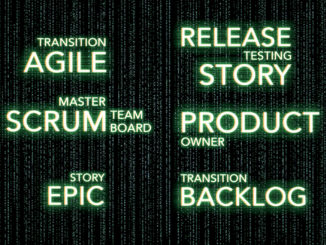
It goes without saying that the pandemic has influenced the challenges facing today’s businesses. A need for increased security follows a rise in the number of cybersecurity attacks and breaches over the past year or so, at a time when threats are becoming more sophisticated. Meanwhile, many organisations are having to adjust to remote working, or at least a hybrid model, and are therefore requiring more cross-location protection.
On top of this, businesses in most industry sectors are under more financial pressure than ever, with a need to operate at maximum efficiency at all times. Those organisations that have adapted fast and embraced changes are coping well, and in many instances, thriving. Organisations that aren’t so quick to acclimatise to new ways are in danger of being left behind.
To avoid this, and support businesses in their digital transition, software asset management (SAM) needs to work harder. In order to meet the changeable requirements of the modern enterprise, a more agile approach to SAM is necessary; one that responds to demands as and when they present themselves.
While traditional SAM services provide up-to-date licensing assistance that helps a business understand whether it is compliant or overspending on software, all too often there is little room left for acting upon the recommendations highlighted – and it’s these changes that can have the most significant impact, both operationally and financially.
Agile software asset management means improved collaboration between SAM teams and stakeholders, it means a clearer focus on business priorities, and it means measurable results that are used to inform meaningful decisions.
More involvement from key stakeholders
For software asset management services and processes to change, the way people use them has to change.
Traditionally, it might just have been SAM managers themselves involved in such work, alongside IT teams. However, to revolutionise how software asset management is consumed, it needs input from other areas. Stakeholder engagement from other departments, including finance, procurement and C-level, is crucial.
A more agile approach to SAM allows stakeholders to request SAM activity to be carried out based on their own priorities at a time that suits them, where traditionally it’s likely these requests would only have come from the SAM team.
Building the visibility of software asset management and the role it plays within an organisation is the first step towards making it an increasing priority, raising awareness, and ensuring it’s used to its full effect.
The flexibility to switch priorities
Instead of pursuing a formulaic approach to workloads, agile SAM services are about targeted optimisation – prioritising the actions most likely to return value to the organisation.
Managers should be able to switch priorities as new challenges arise, having a shareable, user-friendly activity log, with a clear view of what needs to be done, and how important it is, to make it as easy as possible to change course when something more urgent arises.
Having the ability to re-scope and re-prioritise actions at a moment’s notice, means businesses can move ahead with the changes that provide the most benefit with immediate effect.
The same flexibility should also be offered when it comes to cost too. Operating a model where software asset management activities can be stepped up or dialled back as and when needed, will be hugely helpful to many businesses.
Improved measuring and sharing
There’s an ever-growing need to prove efficiency and cost savings, therefore it’s increasingly important to educate those not overly familiar with software asset management, on the benefits. It’s something that impacts every department, and so making sure this data is widely available is key.
SAM tools should be accessible to all, but the information they provide should be tailored to individual groups, in a way that’s easily digestible, and meaningful to them.
For example, procurement and finance teams need to understand specific software costs and details on who’s logging in, to ensure they’re being correctly used. Directors on the other hand, may prefer an overview of what’s being spent, what savings are being made, and projections of how the program can generate year-on-year savings.
With the majority of organisations facing unpredictable times, an agile and effective software license management, without the rigid schedule of traditional SAM services is needed. It’s time for the industry to deliver that.
——-
Sean Robinson is Solutions Director at License Dashboard, who specialise in Software Asset Management and licensing expertise for large and fast-growing organisations



